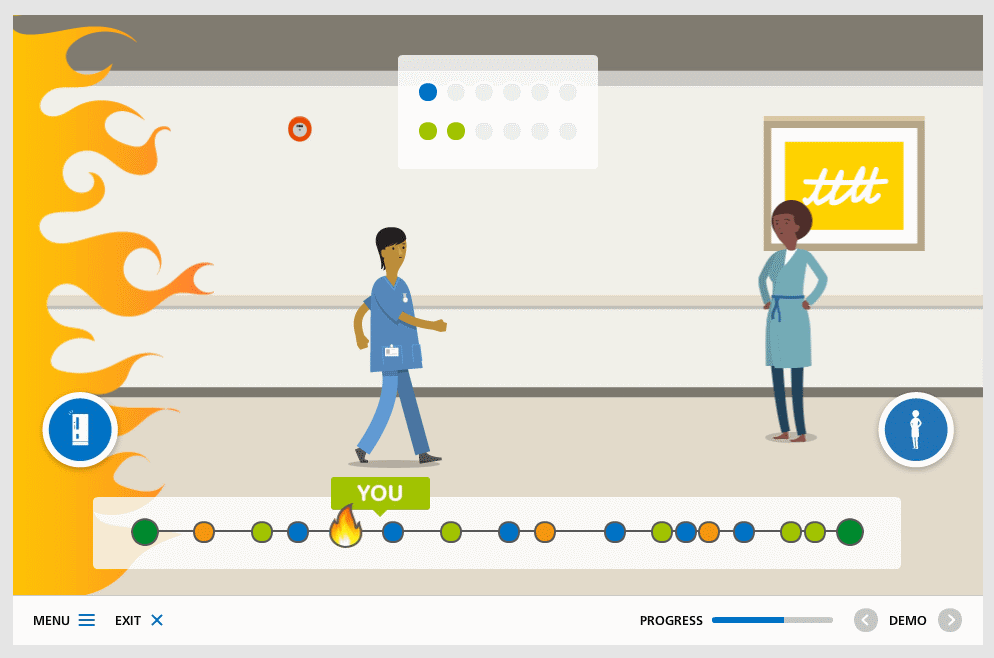Why your health and safety training deserves more love


What if your health and safety training was the best learning experience your employees ever had?
Colleagues talk about what they learned. New starters get up to speed more quickly. Learners recommend the training to others and share further learning resources.
Is this vision overkill? The answer depends on what you want to achieve.
To go beyond ‘tick box’ compliance and create a health and safety culture, you need to keep learners engaged and motivated.
Health and safety is one of the first training topics your employees will encounter and a core business function.
Towards Maturity says top performing organisations rank health and safety as one of their highest priorities.
Here’s how giving your health and safety training more love can bridge the gap between engagement and compliance.
Counting the cost
The best businesses are improving the value of their health and safety training by using appropriate learning technologies.
Towards Maturity reports that high achieving organisations are 26 times more likely to have improved the effectiveness of the learning experience through better application of technology than low achievers.
These companies know it is in their best interest and those of their employees to make their health and safety training the best it can be.
The Health and Safety Executive (HSE) estimates the total cost to organisations of injury or illness at work as £2.8 billion. The cost to individuals is £8.2 billion. So health and safety training can have a much bigger impact on employees than employers.
Good health and safety training explains the real costs and benefits for learners.
Are you neglecting your health and safety training?
With mandatory training topics, sometimes there is a focus on completion rather than engagement.
After all, your employees must do the training. Why sugar the pill?
But the learning experience fails if your people don’t absorb what they need to know.
If you suspect your health and safety training needs rethinking, see how it measures up against this checklist:
- Boring – Do your employees dread doing it because they find it boring?
- Relevance – Are your colleagues confused about why they have to do the training?
- Consistency – Is the look and feel of your training in line with your corporate culture?
- Personal – Do your employees end up doing parts of the training they don’t need?
- Availability – Can your learners find the training and access it easily?
- Follow up – Are your employees given the option to find more after the initial mandatory training?
Tips for giving your health and safety training some love
Here are four ways to help learners love their health and safety training.
- Gamification
- Campaigns
- Micro learning
- Customisation
We’ve picked some real examples of each approach to show how to enrich your health and safety training.
Gamification: Southern Health NHS Foundation Trust
Games work best when there are real risks and consequences. So health and safety training is a good match.
Fire safety is one of the most common types of compliance elearning that companies provide for their employees.

In this game for Southern Health NHS Foundation Trust learners complete tasks while under pressure. It is easier to recreate this situation using game techniques. When there is a real emergency staff are under pressure to complete tasks. Game-based elearning mirrors the effect.
Campaigns
40% of learners say not being able to find what they need stops them from learning at work.
You can overcome this by making the training a process, not an event and marketing it to your learners.
You could incorporate health and safety into an existing campaign or programme such as onboarding or induction.
It is possible to combine a campaign with a leader board to foster friendly competition between colleagues.
See how retailer, Tesco is using this campaign approach to transform its compliance training.
Micro learning – Farmfoods
The more convenient it is to access training, the more your learners will take advantage of it.
One way to reduce barriers is to break the content down into manageable chunks.
Farmfoods turned key health and safety topics into bite size elearning modules. This allowed staff to fit the training into their working day more easily.

Consider a micro learning style if your learners need to brush up on their knowledge, or where you want to minimise time away from customers.
Using a mobile friendly technology like Adapt also allows employees to access training from anywhere on any device.
Customisation
If your business has unique health and safety requirements, you may need to customise your training approach.
Tailoring a course can overcome learner complaints about irrelevant training or ‘catch all’ courses.
If you can show your employees the specific benefits to them personally, your training will be far more effective.
Now you know why and how to add some love to your health and safety training, time to put it into action.